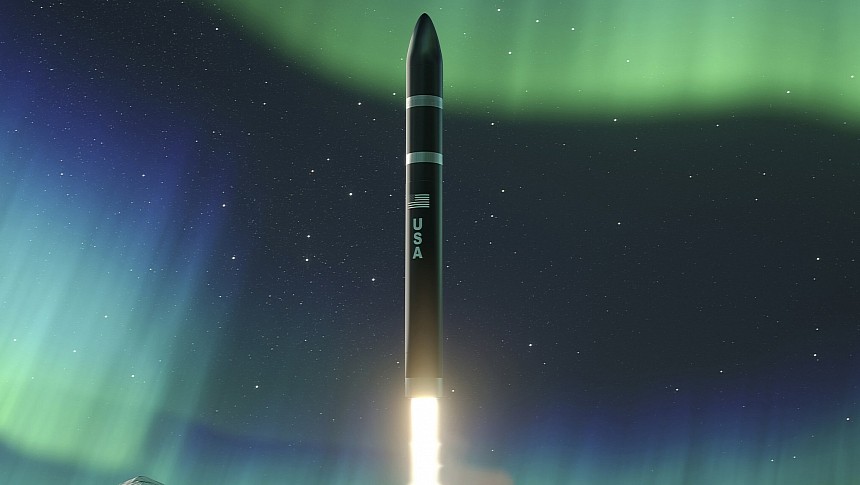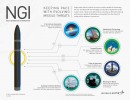The Cold War may have been over for three decades by 2023, but don't tell that to Lockheed Martin's Next Generation Interceptor (NGI) program team. Despite the Iron Curtain having long fallen, ballistic missile attacks, either nuclear or conventional, are still a major priority for the Department of Defense. Thanks to the NGI program reaching a "major design milestone" this past month, American airspace will be even safer than it is right now in the not-so-distant future.
Through an internal memo released to the Missile Defense Agency (MDA) on September 29th, Lockheed Martin announced that plans to deliver the Next Generation Interceptor to full-time deployment is still on the accelerated schedule the company set for itself. With nations adversarial to the United States and its NATO allies like North Korea routinely advancing their intercontinental ballistic missile (ICBM) capabilities, the NGI was designed to operate in any weather conditions, at any time of the day, 24 hours a day, and seven days a week, without fail.
As the backbone of the Missile Defense Agency's Ground-based Midcourse Defense system, the NGI will soon be part of the last line of defense against incoming ballistic missiles potentially targeting American cities or points of military manufacturing. It consists of a bespoke, freshly-designed booster rocket vehicle that will accelerate to many times the speed of sound to intercept and destroy enemy ICBMs well before they reach North American airspace. In a worst-case scenario, such a weapons system could mean the difference between tens of millions of people surviving or perishing.
As the NGI program continues to make leaps and strides in development at a seemingly breakneck pace, an entire network of logistics manufacturing sub-systems stand at the ready to bring the system into full-scale operation as quickly as humanly possible. With the threat of war between the U.S. and Russia or China orbiting around the periphery of modern current events, expect the final push to bring the Next Generation Interceptor into service to be forthcoming and swift. As if a nation's national security partially depends on its construction.
"I am proud of our team's commitment to innovating with urgency to achieve expectations for this phase of the program," said Sarah Hiza, vice president and general manager of Strategic and Missile Defense at Lockheed Martin, as she went through the finer details of Lockheed Martin's groundbreaking new missile defense system. "With this additional confidence in our NGI design through a week-long digital review with our MDA customer, we are on track to deliver the right solution to meet the needs of the nation." There's no word yet on when exactly the NGI program will see its first deployment. But with the way things are going, expect it sooner rather than later.
As the backbone of the Missile Defense Agency's Ground-based Midcourse Defense system, the NGI will soon be part of the last line of defense against incoming ballistic missiles potentially targeting American cities or points of military manufacturing. It consists of a bespoke, freshly-designed booster rocket vehicle that will accelerate to many times the speed of sound to intercept and destroy enemy ICBMs well before they reach North American airspace. In a worst-case scenario, such a weapons system could mean the difference between tens of millions of people surviving or perishing.
As the NGI program continues to make leaps and strides in development at a seemingly breakneck pace, an entire network of logistics manufacturing sub-systems stand at the ready to bring the system into full-scale operation as quickly as humanly possible. With the threat of war between the U.S. and Russia or China orbiting around the periphery of modern current events, expect the final push to bring the Next Generation Interceptor into service to be forthcoming and swift. As if a nation's national security partially depends on its construction.
"I am proud of our team's commitment to innovating with urgency to achieve expectations for this phase of the program," said Sarah Hiza, vice president and general manager of Strategic and Missile Defense at Lockheed Martin, as she went through the finer details of Lockheed Martin's groundbreaking new missile defense system. "With this additional confidence in our NGI design through a week-long digital review with our MDA customer, we are on track to deliver the right solution to meet the needs of the nation." There's no word yet on when exactly the NGI program will see its first deployment. But with the way things are going, expect it sooner rather than later.






